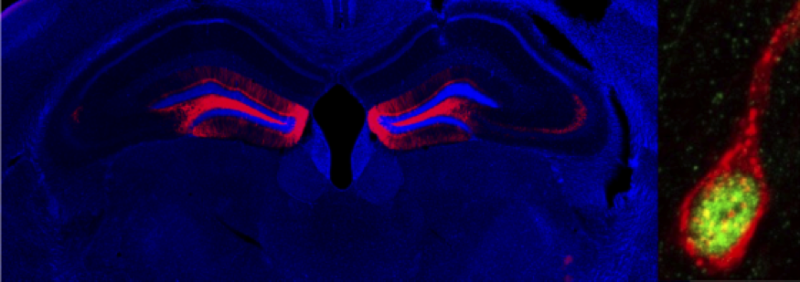To preserve its memories, the brain must regulate its neural networks

Memory, i.e. our ability to record, to preserve and to recall our past experiences, makes up one of the most fundamental and fascinating abilities of our brain. For over forty years, neuroscientists have been interested in the biological mechanisms underlying the storage of the information that our brain records every day. Today, a team from the Faculty of Medicine of the University of Geneva (UNIGE) demonstrates how the brain regulates the size of the neuronal ensembles that reflect the memory trace to optimize performance. By targeting neurons in the hippocampus, the scientists show that it is possible to inhibit - or on the contrary to resurface - a memory. These results can be read in Neuron.
The trace that a memory leaves in our brain is made up of a set of cells located in the hippocampus, called engram. During the encoding of memories, the neurons that form the engram create a network. For a memory to be fixed, the correct number of neurons must be activated. If too many cells are mobilized, the storage of information may become compromised. To understand how memory works, the Geneva researchers investigated the mechanisms that control the recruitment of neurons into the engram. Initiated by Dominique Muller, who tragically passed away last April, this study was conducted by Pablo Mendez and Christian Lüscher from the Department of Basic Neurosciences at UNIGE Faculty of Medicine.
To weaken or strengthen a memory
To study the long-term stability of memory, the scientists presented mice with a particular situation, in order to create a memory. They then exposed these rodents several times to that same situation. By using optogenetics - a technique combining optics and genetics that makes neurons sensitive to light- they stimulated particular neurons. They were thus able to observe that the cells recruited to the engram activate inhibitory cells, which prevent the activation of neighboring neurons. By identifying this inhibition mechanism, the team deciphered how the mobilized neurons control the size of the cell engram and, therefore, the stability of contextual memory.
Pablo Mendez, last author of the study, explains the rest of the experiment: «Since we wanted to know to what extent the size of the cell engram influences memory, we used optogenetics to «force" mice to recruit more or less neurons. Subsequently, we found that the more the engram is significant, the better the memory is preserved, but only up to a limited point. Beyond a certain size, memory no longer works. We were thus able to reinforce a memory, but also to remove it."
«Now that we know the basic mechanism, we want to decipher how memory itself functions. Which cells for which memories? How do neurons really encode memory? We still have many discoveries to make in order to understand in detail how our brain preserves our memories," explains Christian Lüscher.



















